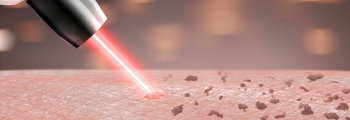3000 BC

Body hair removal can be traced back as early as Ancient Egypt and Roman times. Back then it was believed that having less body hair meant being more civilized and of a higher social class. People have been trying to
1960s

The 1960s was a big year for laser development. Theodore Maiman invented the first laser using a high-power flash lamp, ruby and silver. Several other lasers were invented soon after including the Argon, CO2 and Nd: YAG (neodymium-doped YAG) lasers.
1970s

The first alexandrite laser was invented. This laser proved much safer than its predecessors, but it did not heat the hair follicles enough to effectively treat body hair issues.
1975

As practitioners experimented with lasers for dermatological purposes, it was observed that some laser treatments were more damaging to certain skin tones than others. Dermatologist Dr. Thomas B Fitzpatrick developed a phototyping scale that classifies human skin color. This scale
1983

Scientists Anderson and Parrish developed a laser technique known as selective photothermolysis that utilizes a specific wavelength of light and pulse duration to target and destroy pigmented tissue without damaging the surrounding tissues.
1997

Selective photothermolysis theory was used in laser hair removal procedures and proved to be successful as reducing unwanted hair while minimizing collateral damage to the skin. In 1997 the first laser hair removal device was approved for use by the
2000s-present

Since lasers were approved for hair removal, there have been major refinements in their safety and efficacy. Today, laser systems, like the GentleMax Pro, are safe for use on all skin types and provide cooling devices for more comfort. Laser
